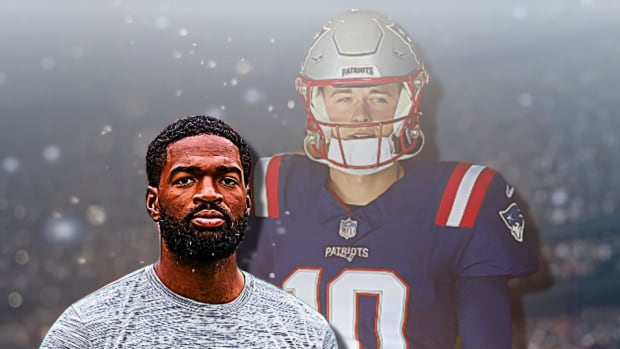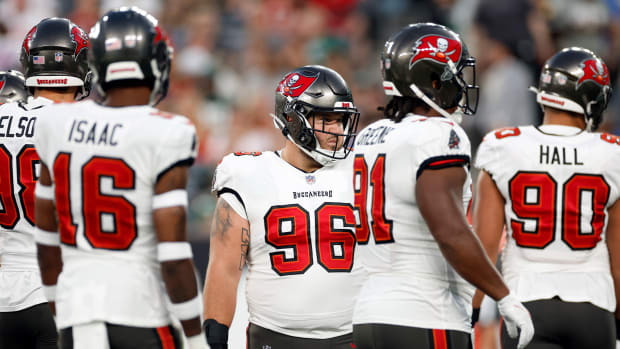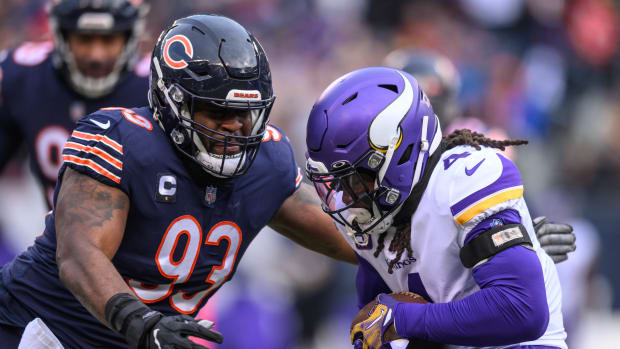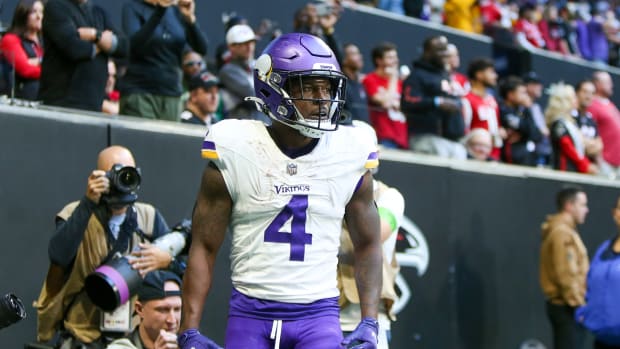Chandler Jones trade solves problems for both Patriots, Cardinals
On Tuesday, New England reportedly traded defensive end Chandler Jones to Arizona for a second-round pick in this year’s draft and guard Jonathan Cooper. There’s no doubt that this trade was a win for both sides, and they’ll each be better off because of it.
Jones, whom the Patriots traded up to draft at No. 21 in 2012, is a good player, but he’s not great. He’s good at setting the edge in the run game, but not elite. If you use sacks as a gauge, Jones was certainly productive: he reached double-digit sacks in ’13 and ’15, and had 36 in the 55 games of his career so far. But he’s not a dominating pass rusher.
L.A. Coliseum has back-to-the-future homecoming awaiting Rams
But the writing was on the wall in Foxboro. With DE Olivier Vernon signing a huge contract with the Giants last week ($52.5 million guaranteed) and with better young players on the Patriots (linebackers Dont’a Hightower and Jamie Collins, cornerback Malcolm Butler) needing new contracts at some point, Jones wasn’t going to be around for much longer.
The Cardinals were desperate for pass-rush help and weren’t in a position to acquire elite players in free agency or the draft. In Arizona, Jones will be better served that he won’t have the varied responsibilities edge players have for the Patriots (getting hands on running backs, tight ends, worrying about the running game first). The Cardinals are a high-pressure scheme and do more one-gap attacking than the Patriots.
But Jones isn’t quite a perfect fit because he’s better at strictly being a 4–3 end, and in Arizona he’ll be a 3–4 outside linebacker. He can and has done that, and he’ll team well with Markus Golden at bookends, but standing up is not Jones’s forte.
• KAPLAN: The Fall of Johnny Football: Inside the downward spiral
With the trade, the Patriots pick up valuable cap space and veterans Rob Ninkovich and Jabaal Sheard (a more dominating pass rusher than Jones on a per-snap basis) can play the edge in Jones’s place. Rookies Geneo Grissom and Trey Flowers showed some promise in their first seasons, and you can expect the Patriots to potentially add a veteran pass rusher (Chris Long has visited).
SI 50, Nos. 47-45: Shilique Calhoun, Germain Ifedi, Javon Hargrave
The most valuable piece of the trade for the Patriots is the second-round draft pick, while Cooper is basically a low-risk extra. Since being drafted at No. 7 in 2013—the highest-drafted guard since 1986—he missed his entire rookie season with injury and then managed just 11 starts in two seasons. Before this deal, there were reports that the Cardinals were thinking of moving Cooper to center. He won’t be given anything other than a fresh start under the tutelage of legendary line coach Dante Scarnecchia.
The Patriots have three guards—Josh Kline, Shaq Mason and Tre Jackson—who at times played good football last season (Mason and Jackson were rookies)—and if Cooper can’t get it together in New England, his career could be over. I can’t see the Patriots picking up Cooper’s $11.9 million fifth-year option, so he’s essentially on a one-year contract. But as far as last chances go, Cooper couldn’t ask for a better place to land considering he’ll have an opportunity to compete and a coaching staff that will put him in a position to be successful.




































